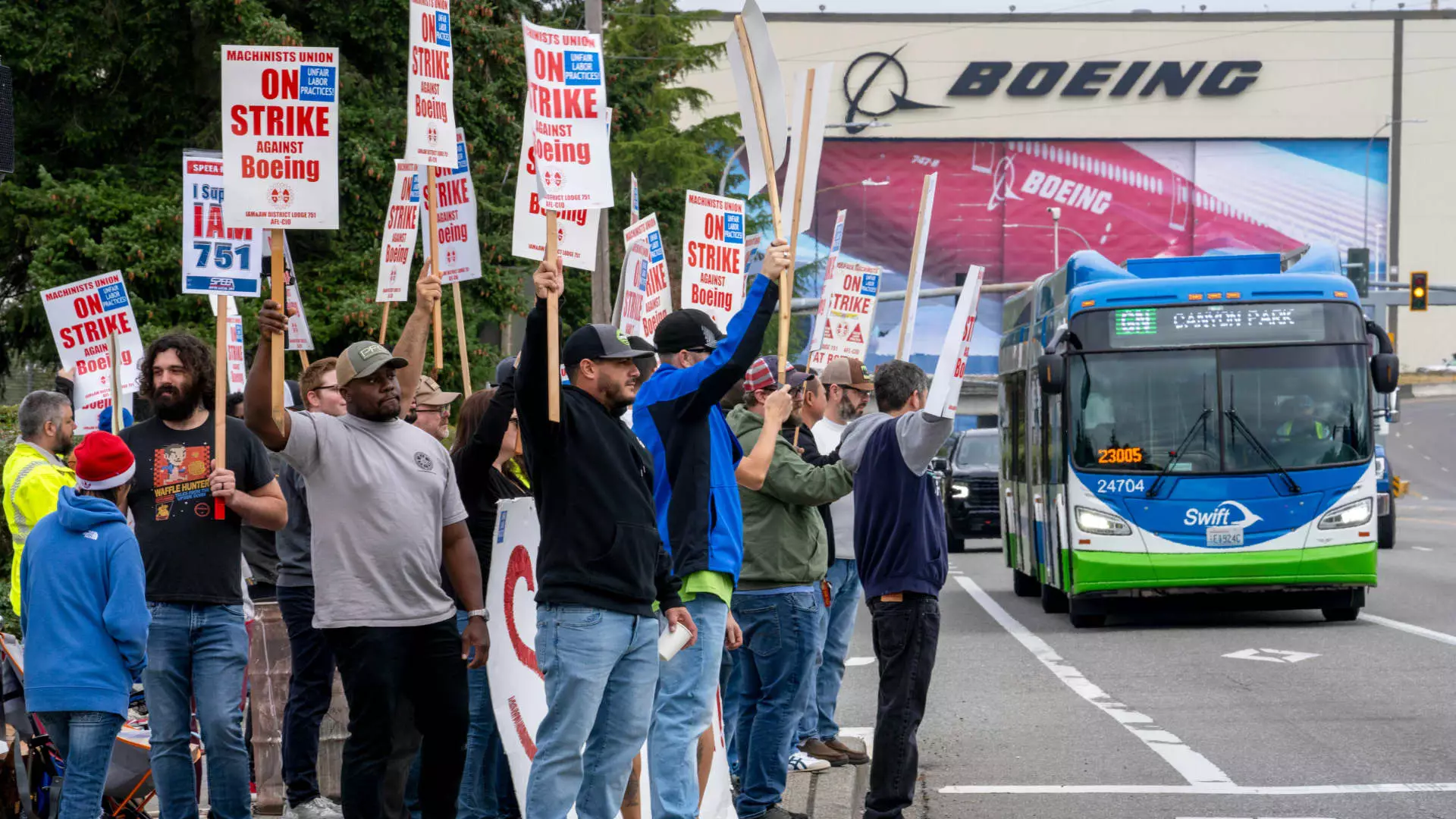In an unprecedented move aimed at financial preservation amidst ongoing labor unrest, Boeing has announced a temporary furlough for thousands of its U.S. executives and staff. This decision follows a dramatic vote by over 30,000 machinists in the Seattle area and Oregon, where a staggering 96% rejected a proposed labor contract, leading to a widespread strike. The company’s CEO, Kelly Ortberg, who assumed leadership just a few weeks prior, communicated the urgency of the situation to employees, positioning the furlough as a necessary step in navigating a complex economic landscape.
The catalyst for this labor unrest stems from significant discontent regarding the terms of Boeing’s proposed contract, which included a notable 25% wage increase. However, workers voiced their concerns about this raise failing to address the surging cost of living in the Seattle area and the loss of pension benefits, which has intensified discontent among employees. The union representing these workers expressed clear frustration following mediation efforts, indicating that the atmosphere of negotiation remains tense and unyielding, which raises uncertain prospects for a quick resolution.
Financial Implications and Corporate Strategy
Boeing is not just grappling with labor issues. The organization is also burdened with $60 billion in debt and has been working diligently to recover from a series of safety and quality crises that have impacted its reputation and operational viability. CFO Brian West stated that the company would implement a hiring freeze and curtail raises for current employees, further tightening fiscal strategies in response to this challenging labor landscape. Temporary cessation of “non-essential contractors” emphasizes a deep-cutting approach, aiming to conserve as much cash flow as possible. With these measures, Boeing is signaling a period of austerity, heightening concerns about the morale and resilience of its workforce.
As this strike unfolds, the implications for Boeing are profound, extending beyond immediate financial hardships. The decision to prioritize activities integral to safety and quality assurance reflects an acknowledgment that the company’s long-term sustainability depends on restoring trust with both employees and consumers. Amidst these labor disputes, the production of critical aircraft models, such as the 787 Dreamliner, will continue at non-union facilities, a strategy aimed at minimizing operational disruption.
In his communication to employees, Ortberg emphasized the importance of transparency during these turbulent times. The commitment to keep lines of communication open highlights Boeing’s recognition of the need for employee engagement and morale preservation during the strike. As the situation evolves, the company will need to balance short-term financial imperatives with long-term workforce relations and industry reputation in a fiercely competitive market. The path ahead remains fraught with challenges, but Boeing’s current strategies could either recalibrate its trajectory or exacerbate the crises it faces in the near future.


Napsat komentář